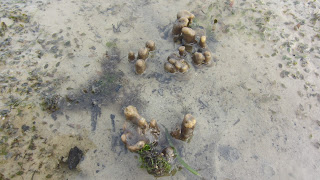Sponges are the simplest of animals. They are classified as animals because they are multicellular, heterotrophic, and lack cell walls. They lack true tissues and organs, and have internal skeletons of spongin or calcium carbonate, consisting of jelly-like mesophyl sandwiched between two thin layers of cells. Sponges have no body symmetry, rather, the shapes of the bodies of sponges are adapted for maximal efficiency of water flow. Water enters through the central cavity, deposits nutrients, and leaves through a hole called the osculum. All sponges are sessile(multi-celled animals) aquatic animals, and do not have nervous,circulatory or digestive systems. Instead, most rely on maintaining a constant water flow through their bodies to obtain food, oxygen and remove wastes.
While most of the approximately 5,000–10,000 known species feed on bacteria and other food particles in the ocean, some host photosynthesizing micro-organisms known as endosymbionts and these symbiotic relationships often produce more food and oxygen than they consume. A few species of sponge that live in food-poor environments have become carnivores that prey mainly on small crustaceans.
Sponges are hermaphrodites and reproduce mostly by sexual reproduction, releasing sperm cells into the ocean to fertilize ova that in some species are released and in others are retained by the "mother". The fertilized eggs form larvae which swim off in search of places to settle. When conditions deteriorate, for example as temperatures drop or salinity decreases, many freshwater species and a few marine ones produce gemmules, "survival pods" of unspecialized cells that remain dormant until conditions improve and then either form completely new sponges or recolonize the skeletons of their parents.
 |
| Dried Sponges |
 |
| Blue Sponge |
ref:en.wikipedia.org/wiki/Sponge

No comments:
Post a Comment